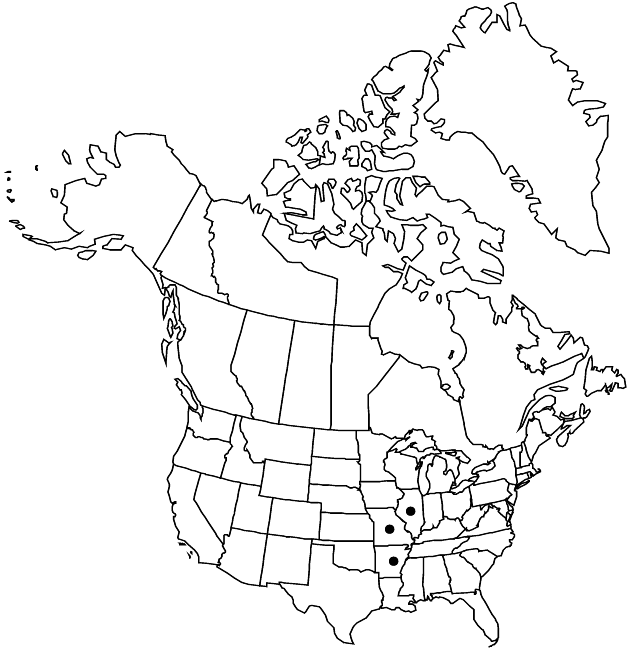Solidago drummondii
Fl. N. Amer. 2: 217. 1842.
Plants 30–100 cm; caudices stout, branched, rhizomes thick. Stems usually 1, ascending to erect, uniformly short villoso-strigose, occasionally glabrate proximally. Leaves: basal and proximal cauline short-petiolate, blades broadly ovate or elliptic-ovate, margins serrate, ± 3-nerved and pinnately nerved, abaxial faces (at least) evenly short villoso-strigose; mid and distal cauline like proximal, 20–70 × 10–40 mm (1.3–2 times as long as wide), usually only those near arrays reduced and 1-nerved. Heads 30–200+, apparently sometimes drooping, in open leafy, secund pyramidal, paniculiform arrays, branches recurved, leafy-bracteate, secund, proximalmost branch sometimes separated by several nodes from next. Peduncles 1–6 mm; bracteoles ovate, minute, grading into phyllaries. Involucres campanulate, 3–4.5 mm. Phyllaries in 3 series, strongly unequal, obtuse or rounded; mid broadly oblong, inner narrowly so. Ray florets 3–7; laminae 1.5–2 × 0.5–1 mm. Disc florets 4–7; corollas (abruptly ampliate) 3–3.5 mm, lobes ca. 1 mm. Cypselae 1.5–2 mm (4–8 translucent ribs), moderately short-strigose; pappi 2–2.5 mm. 2n = 18.
Phenology: Flowering late Jul–Oct.
Habitat: Crevices of limestone ledges and bluffs, rocky woods, especially in calcareous soil
Elevation: 100–300+ m
Distribution

Ark., Ill., Mo.
Discussion
A. Cronquist (1980) listed Solidago drummondii as reputedly in Louisiana; K. N. Gandhi and R. D. Thomas (1989) did not see any specimen from that state.
Selected References
None.